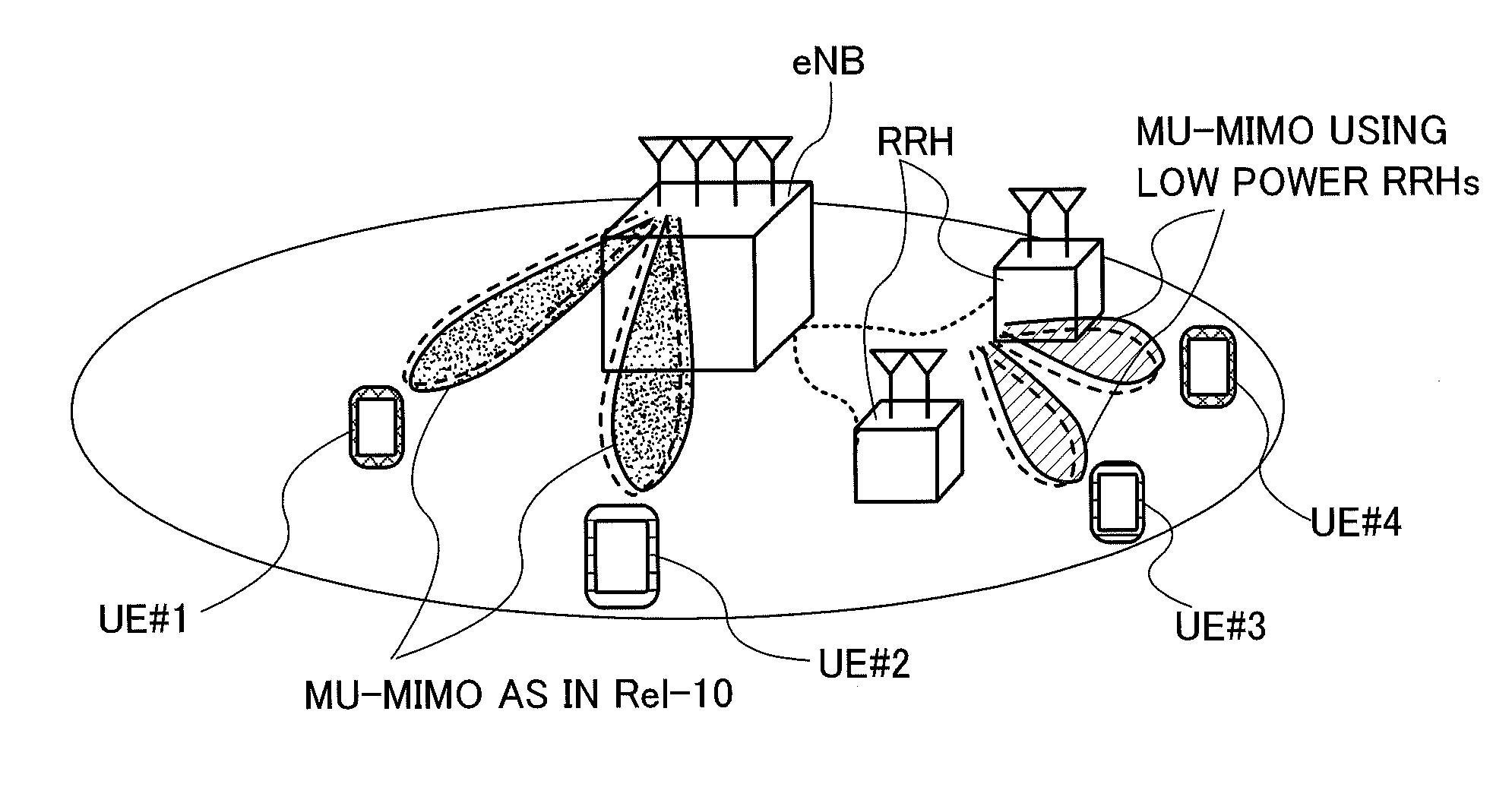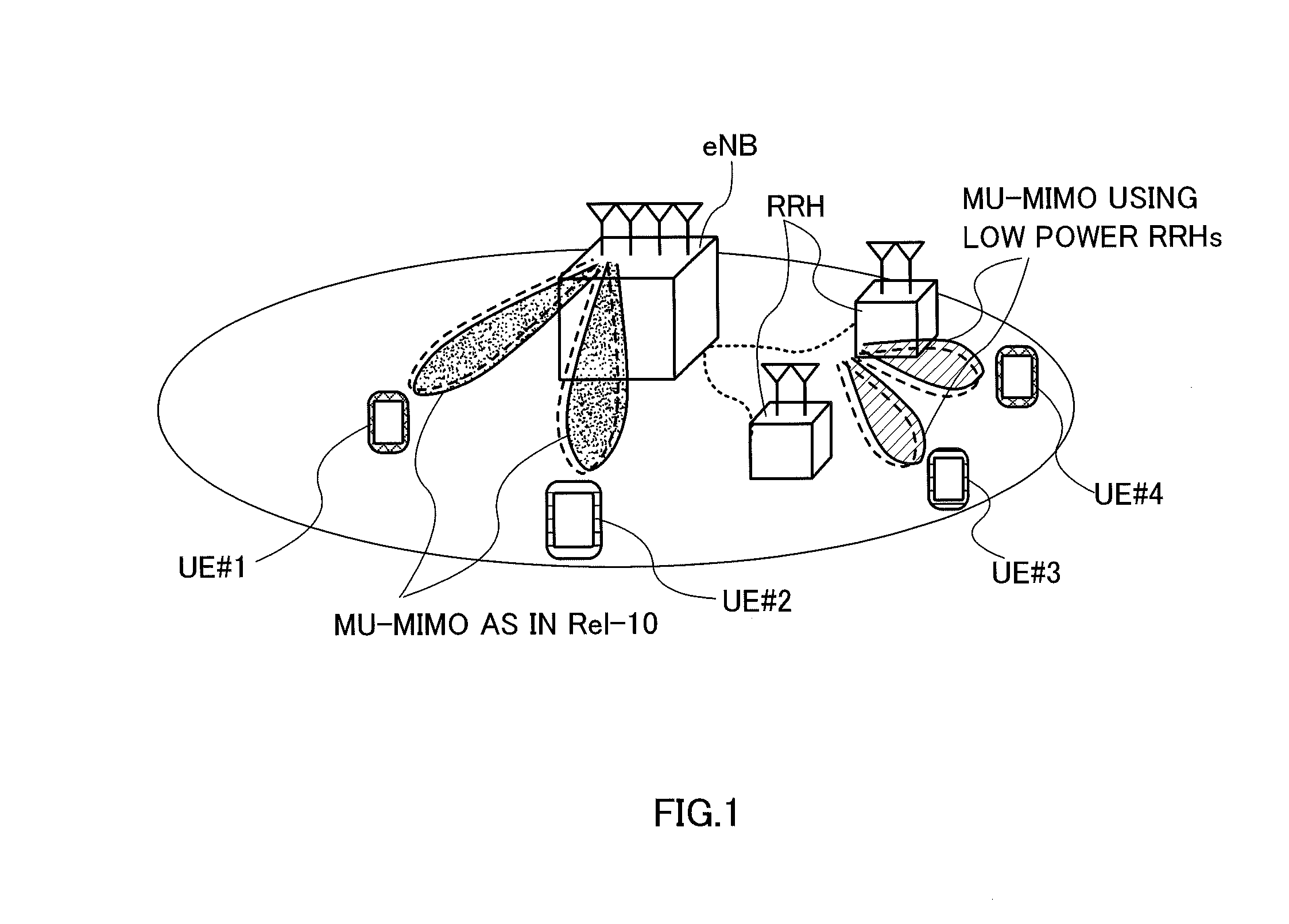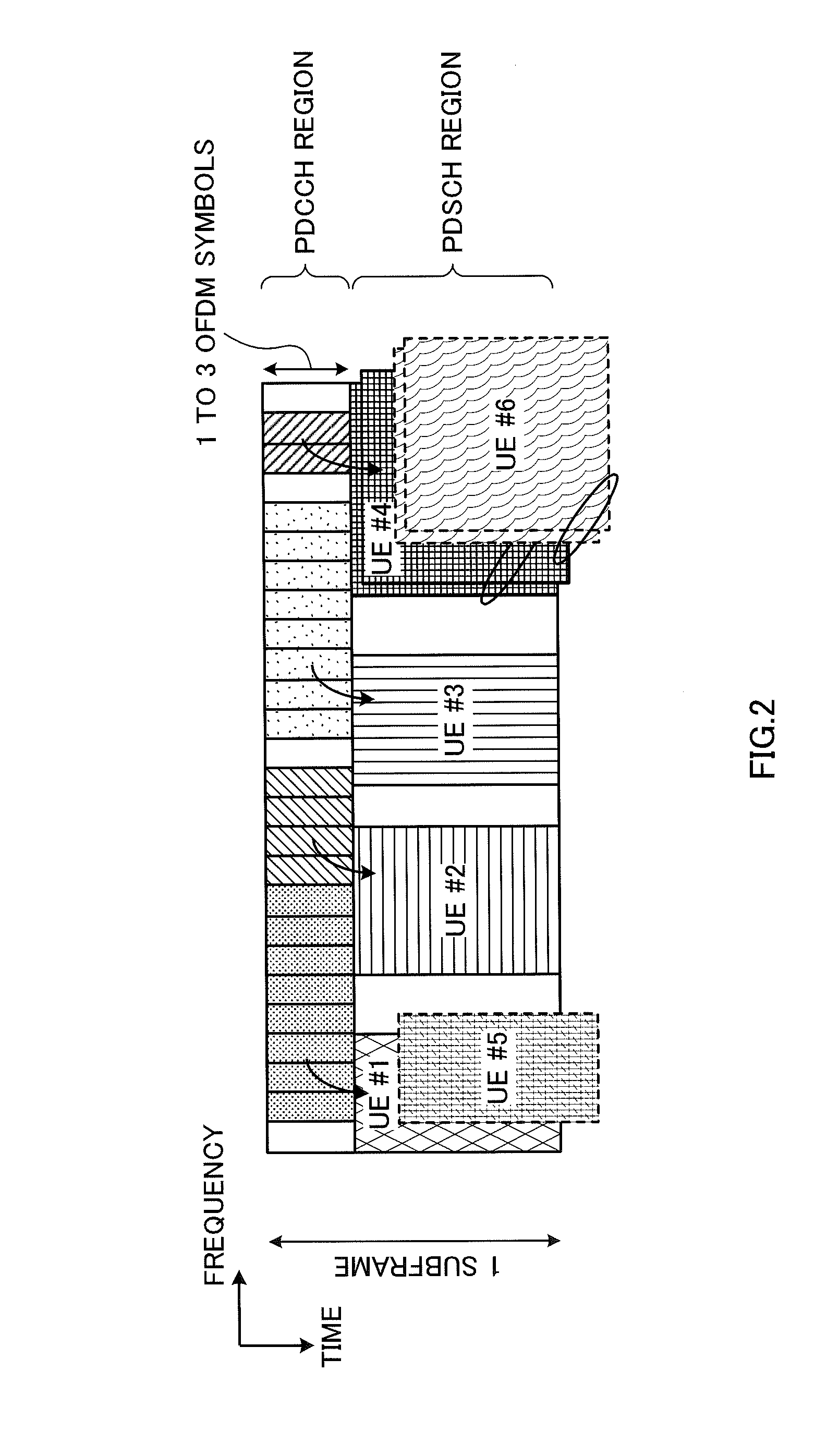Radio communication system, user terminal and radio communication method
- Summary
- Abstract
- Description
- Claims
- Application Information
AI Technical Summary
Benefits of technology
Problems solved by technology
Method used
Image
Examples
first example
[0041]As a first example, an example of carrying out RLM based on thresholds (second criteria) to support a new radio resource structure will be described. FIG. 5 is a schematic diagram to explain the RLM according to the first example. Hereinafter, the thresholds Qout and Qin (see FIG. 4) that are used in RLM optimized for conventional radio resource structures FIG. 5, the received quality measured with DM-RSs and the received quality measured with CRSs (see FIG. 4) are shown together.
[0042]As shown in FIG. 5, with the present example, when an enhanced PDCCH is configured, RLM is carried out based on thresholds Qout EPDCCH and Qin EPDCCH (second criteria), which are different from the conventional thresholds Qout PDCCH and Qin PDCCH. The threshold Qout EPDCCH corresponds to the threshold of the lower-level end, and is defined as received quality that is equivalent to a block error rate (BLER) of the enhanced PDCCH at which the downlink cannot be reliably received. Qin EPDCCH corres...
second example
[0051]As a second example, an example of carrying out RLM based on conventional thresholds (first criteria) will be described. With the present example, RLM is carried out based on conventional thresholds Qout PDCCH and Qin PDCCH (first criteria) even when an enhanced PDCCH is configured. That is to say, with the present example, the received quality of CRSs transmitted from the radio base station eNB is compared against the thresholds Qout PDCCH and Qin PDCCH, which correspond to BLERs of the PDCCH.
[0052]With the present embodiment, when the received quality measured with CRSs falls below the threshold Qout PDCCH, “out-of-sync,” which indicates a decrease of received quality, is detected. When this “out-of-sync” is detected a predetermined number of times in a row, the timer for judging RLFs is started. The number of times “out-of-sync” continues and triggers the timer is reported from the radio base station eNB to the user terminal UE through higher layer signaling.
[0053]When the ...
third example
[0055]An example of carrying out RLM by selectively using conventional thresholds (first criteria) and thresholds that support a new radio resource structure (second criteria) will be described with the present example. With the present example, one of the first example and the second example is used, selectively, depending on the states of the radio communication system.
[0056]For example, in the situation in which the communication performance of the enhanced PDCCH is better than the communication performance of the PDCCH, the first example is selected. In this case, the radio base station eNB reports to the user terminal UE that RLM is going to be carried out using the first criteria. The reporting may be sent using, for example, higher layer signaling. The user terminal UE carries out RLM by comparing the received quality of downlink reference signals from the radio base station eNB against thresholds Qout EPDCCH and Qin EPDCCH. The details are the same as in the first example.
[0...
PUM
 Login to View More
Login to View More Abstract
Description
Claims
Application Information
 Login to View More
Login to View More - R&D
- Intellectual Property
- Life Sciences
- Materials
- Tech Scout
- Unparalleled Data Quality
- Higher Quality Content
- 60% Fewer Hallucinations
Browse by: Latest US Patents, China's latest patents, Technical Efficacy Thesaurus, Application Domain, Technology Topic, Popular Technical Reports.
© 2025 PatSnap. All rights reserved.Legal|Privacy policy|Modern Slavery Act Transparency Statement|Sitemap|About US| Contact US: help@patsnap.com



